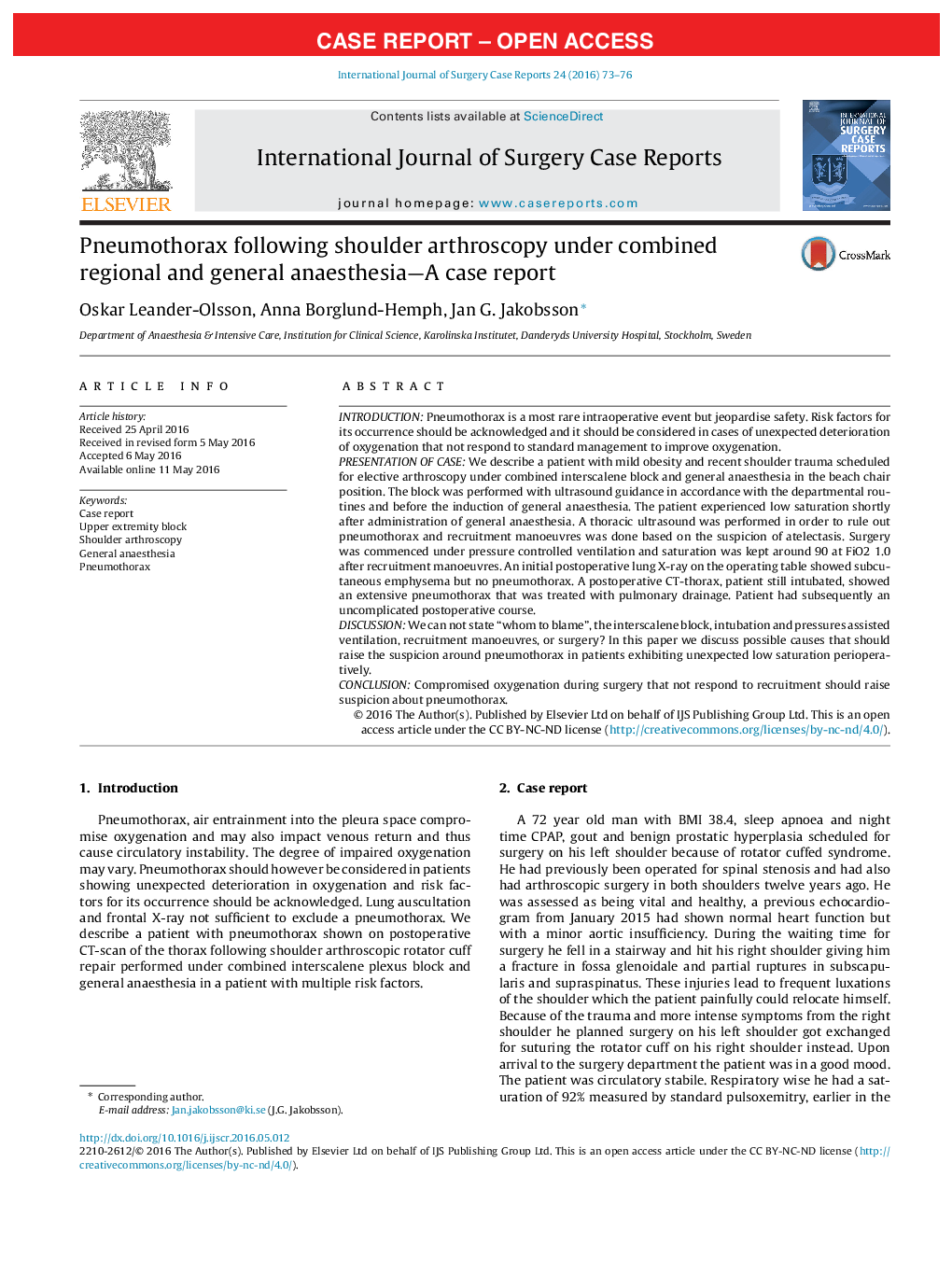| کد مقاله | کد نشریه | سال انتشار | مقاله انگلیسی | نسخه تمام متن |
|---|---|---|---|---|
| 4288248 | 1612090 | 2016 | 4 صفحه PDF | دانلود رایگان |
• Needle punctures, upper extremity block, infiltration associated to surgery.
• Surgery related forces; diathermia in close proximity to the pleural space, any external force that may cause changes in the pleural pressures, e.g. shavers, profound pressure associated breast implant, reconstruction etc.
• Anaesthesia-associated factors; any “accidental” high peak bronchial pressures e.g. caused by bronch intubation or use of a tube-exchange catheter, especially with continuous oxygen flow, and possibly enforced lung recruitment in a at risk patient.
• Patient factors; smoking and lung disease, COPD/emphysema, lung cancer, history of pneumothorax, recent thoracic trauma.
• Lung auscultation is not sufficient for identification of pneumothorax.
IntroductionPneumothorax is a most rare intraoperative event but jeopardise safety. Risk factors for its occurrence should be acknowledged and it should be considered in cases of unexpected deterioration of oxygenation that not respond to standard management to improve oxygenation.Presentation of caseWe describe a patient with mild obesity and recent shoulder trauma scheduled for elective arthroscopy under combined interscalene block and general anaesthesia in the beach chair position. The block was performed with ultrasound guidance in accordance with the departmental routines and before the induction of general anaesthesia. The patient experienced low saturation shortly after administration of general anaesthesia. A thoracic ultrasound was performed in order to rule out pneumothorax and recruitment manoeuvres was done based on the suspicion of atelectasis. Surgery was commenced under pressure controlled ventilation and saturation was kept around 90 at FiO2 1.0 after recruitment manoeuvres. An initial postoperative lung X-ray on the operating table showed subcutaneous emphysema but no pneumothorax. A postoperative CT-thorax, patient still intubated, showed an extensive pneumothorax that was treated with pulmonary drainage. Patient had subsequently an uncomplicated postoperative course.DiscussionWe can not state “whom to blame”, the interscalene block, intubation and pressures assisted ventilation, recruitment manoeuvres, or surgery? In this paper we discuss possible causes that should raise the suspicion around pneumothorax in patients exhibiting unexpected low saturation perioperatively.ConclusionCompromised oxygenation during surgery that not respond to recruitment should raise suspicion about pneumothorax.
Journal: International Journal of Surgery Case Reports - Volume 24, 2016, Pages 73–76
